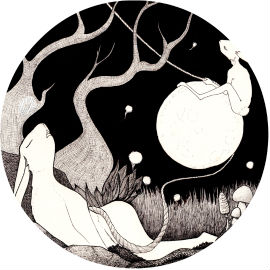Over at Jennifer Byrne’s The Book Club, they’re broadcasting a series of conversations connecting literature and the Seven Deadly Sins.
It’s an interesting thing, watching that show. Half of me loves just sitting back and listening, but there’s another part of me that really wants to get involved in the conversation. So, here’s my (and your) chance to have your say about which books do you think offer an interesting perspective on greed?
This list of the cardinal vices has a long and interesting history, but in the end the list settled down to those listed in a papal order by Pope Gregory the First in about 590, and included in The Divine Comedy by Dante Alighieri in the thirteenth century:
In the order used by Pope Gregory, and repeated by Dante Alighieri (1265-1321) centuries later in his epic poem The Divine Comedy, the seven deadly sins are as follows:
- luxuria (lechery/lust)
- gula (gluttony)
- avaritia (avarice/greed)
- acedia (sloth/discouragement)
- ira (wrath)
- invidia (envy)
- superbia (pride)
This week’s program focused on greed. The panelists talked about:
- Bryan Burrough and John Helyar’s Barbarians at the Gate: The Fall of RJR Nabisco
- Tom Wolfe’s The Bonfire of the Vanities and A Man in Full
- Dr Seuss’s The Lorax
- John Steinbeck’s The Pearl
- Fyodor Dostoevsky’s Crime and Punishment
- F. Scott Fitzgerald’s The Great Gatsby
- Anthony Trollope’s The Way We Live Now
- Nikolai Gogol’s Dead Souls
- William Thackeray’s Vanity Fair
- Richard G Newhauser’s The Early History of Greede
One book they didn’t talk about, but which I think gives an interresting and nuanced perspective on greed is Shel Silverstein’s The Giving Tree.
This illustrated picture book tells the story of a relationship between a tree and a boy, over the course of the boy’s lifetime. During this time, the tree offers the boy many gifts–shade, leaves, fruit, friendship–asking nothing in return. What the boy offers the tree in return is less clear.
What interests me about reading this book in terms of the ‘deadly sin’ of greed, is that it tells a story about the relationship between two people: how a great many of the things we might want come at a cost to others.
For me, the definition of greed as a sin (as a moral wrong) that comes from this is that greed occurs when the balance between taking and giving is out of whack.
Greed that does not have an opportunity cost for others is not really greed at all, perhaps. Or at least not sinful. It is not greedy, I think, to relish the sunlight on my face. Being out in the garden — in a park or at the beach — has few, if any, costs. Perhaps the fuel to get there, if the beach is a long way away.
On the other hand, endlessly ‘growing’ a business (which was the model of ‘good greed’ some of the panellists on The Book Club offered) usually does have some negative effects on others: on other businesses, on individuals, on the environment, for example. If the business is understood as the ‘boy’ in Silverstein’s The Giving Tree, then any number of individuals, institutions, etc might be understood as the tree. At what point does the boy/business ask too much of the tree? At what point does the boy/business’s desire for personal comfort or gain place the health, happiness and wellbeing of the tree/community at risk? That, for me, is the point where true greed occurs: at the point where ‘the boy’ stops caring about, or perhaps even noticing, that their success, comfort or happiness is being bought at the expense of someone else’s, and continues on anyway.
What do you think? What works do you think speak to the deadly sin of greed?



No Comments